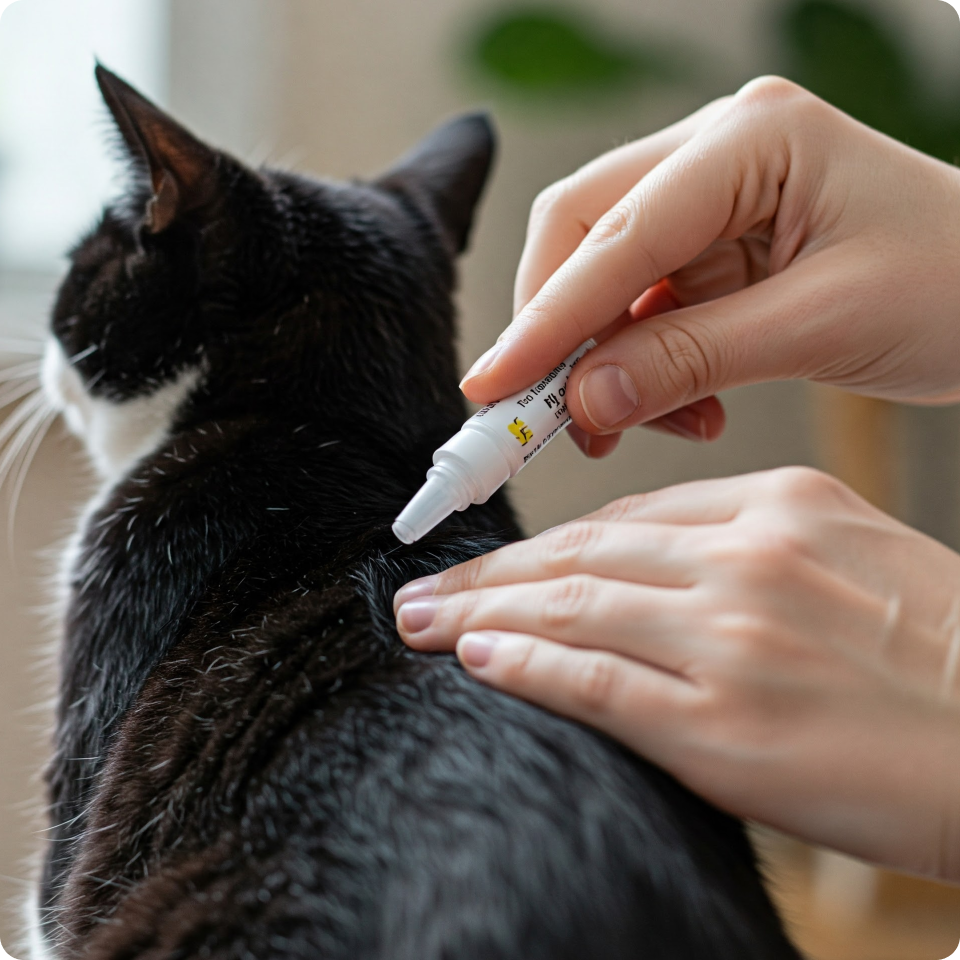Last Updated: 29/03/2025
Adverse Reactions to Flea Tick & Worming Products
Learn how to minimise ricks in adverse reactions to flea and worming medication in dogs and cats
Author: Dr Teagan Lever BVSc (Hons)
Reading Time: 27 minutes - medium read
Managing adverse reactions to topical products
If your pet appears agitated, hyperactive, quiet, subdued or reluctant to remove after the administration of a topical product:
- Wash off the product with a mild dish soap. Do not use pet shampoo as it is too mild to remove all of the product.
- Seek veterinary attention if your pet's condition does not improve following this, or if they show other signs of becoming unwell.
- Report the adverse reaction to the manufacturer. Product labels and product websites will have a contact number to report directly to the registration holder. By law, manufacturers are required to send monthly reports of adverse reactions to the appropriate regulating authority including the APVMA (Australian Pesticides and Veterinary Medicines Authority).
- Keep any of the remaining product and packaging in a safe place in case a sample is required by the registration holder.
- Do not use the same product in the future. Try a product with a different active ingredient or consider a different formulation (e.g. oral). Observe your pet closely for at least an hour after application or administration of future preventatives.
If your pet appears agitated, hyperactive, quiet, subdued or reluctant to remove after the administration of a topical product:
- If your pet develops red and irritated skin, blisters or ulceration:
- Wash off the product with a mild dish soap. Do not use pet shampoo as it is too mild to remove all of the product.
- Please note that often the onset of skin irritation is delayed for several hours with the full extent not apparent until 12-24 hours after application.
- Seek veterinary advice for further management.
- Report the adverse reaction to the manufacturer. Product labels and product websites will have a contact number to report directly to the registration holder. By law, manufacturers are required to send monthly reports of adverse reactions to the appropriate regulating authority including the APVMA (Australian Pesticides and Veterinary Medicines Authority).
- Keep any of the remaining product and packaging in a safe place in case a sample is required by the registration holder.
- Do not use the same product in the future. Speak with your veterinarian about the best course of action for administration of further parasite prevention products.
Further Reading
Want to read more? Check out our other articles:
Which Flea or Worming Product Do I Need?
What is the Best Heartworm Treatment for Dogs?
History
Our experts continually monitor the health and wellness space and we update our articles when new information becomes available.
Dr Kim Chainey BVSc
Contributing Author, BVSc
Kimberley graduated from James Cook University in 2012 and initially worked in a mixed animal practice on the Atherton Tablelands for two years. Her interest in small animal medicine led her to undertake a rotating internship at Veterinary Specialist Services in Brisbane. Since then, she has worked in small animal clinics throughout south east QLD and NSW! She is passionate about providing the best quality of care to all animals that walk through the door




